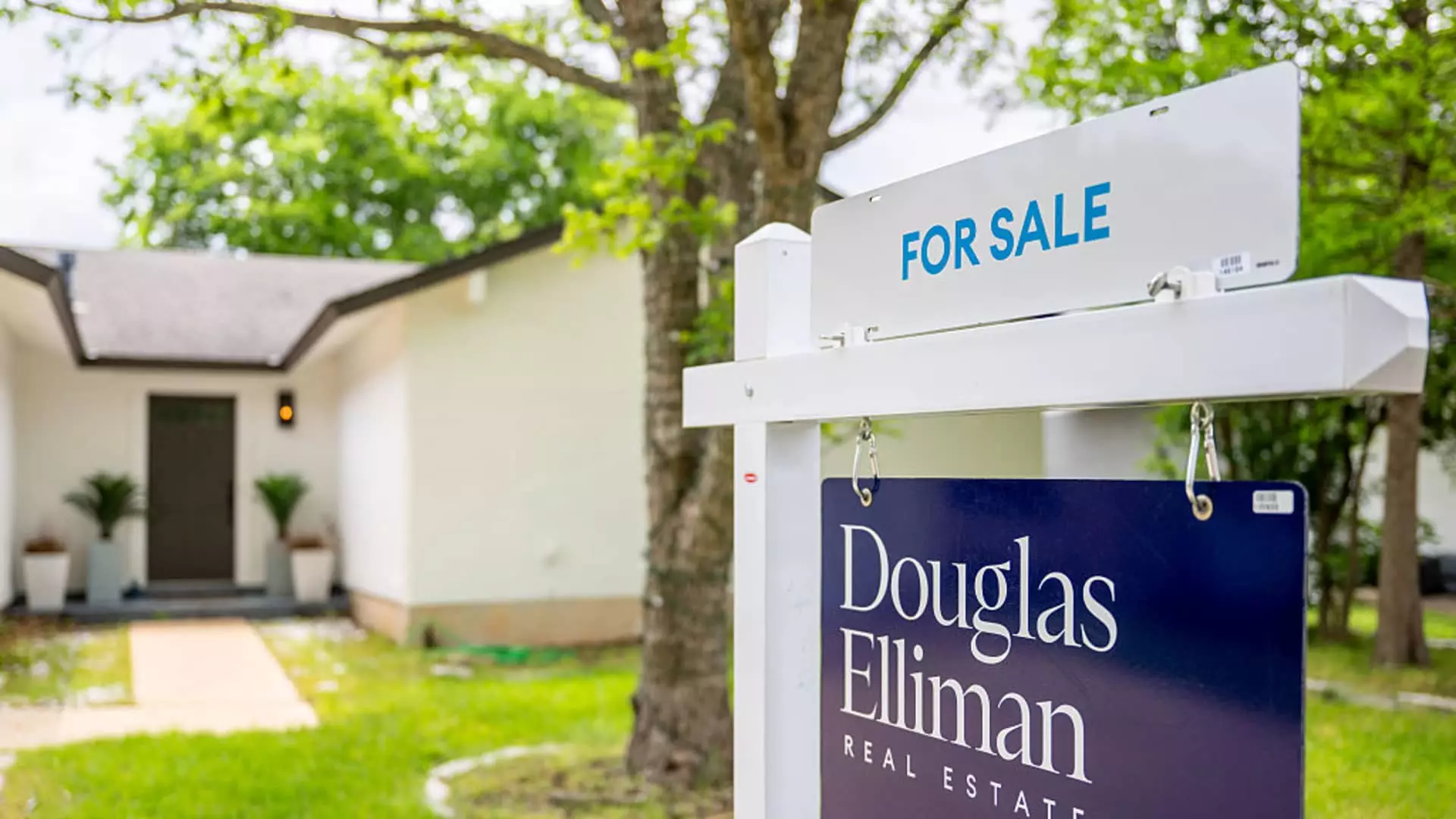In what should have been a celebratory announcement, the latest figures from the National Association of Realtors (NAR) revealed a meager 0.8% bump in sales of previously owned homes for May, reaching a seasonally adjusted annualized rate of 4.03 million units. For a market starved for dynamism, this slight upward tick feels more like a pitiful gasp than a sign of robust recovery. Analysts had anticipated a slight decline of 1%, contributing to a pervasive sense of malaise about the housing sector. Even more alarming is the year-over-year comparison, which shows that sales are actually down by 0.7% compared to May of last year.
The regional stats throw additional water on any potential for a market resurgence. While the Northeast experienced a commendable surge with a monthly jump of 4.2%, the West—a region synonymous with skyline dreams—saw sales plunge by 5.4%. It’s worth noting that this region is also the priciest in the nation, regrettably reinforcing the narrative that homeownership is increasingly out of reach for the average American.
The True Price of High Mortgage Rates
A major culprit behind these stagnant figures appears to be persistently high mortgage rates. The 30-year fixed mortgage that many buyers rely upon remains stubbornly above 7%, swiftly elevating the cost of homeownership. Lawrence Yun, NAR’s chief economist, aptly articulated the situation when he stated, “The relatively subdued sales are largely due to persistently high mortgage rates.” This is a critical point that highlights how economic policies ripple through the lives of average citizens.
The housing market’s precarious state, unfortunately, underscores the need for more favorable fiscal strategies that prioritize regular Americans, rather than only appeasing a select few wealthy investors. The stagnation in home sales primarily affects first-time buyers and those at lower price points. With only 30% of buyers being first-timers—down from 31% last year—there’s a troubling trend toward a market that favors cash buyers over average families seeking the American dream.
A Ripple Effect Across Market Segments
While it’s easy to focus solely on the abysmal sales statistics, it’s important to note that the real estate landscape is multifaceted. Although the number of available homes surged by over 20% from last year, reaching approximately 1.54 million units by the end of May, this increase in supply hardly translates to affordability or increased accessibility. In fact, the median home price hit a record high of $422,800, a 1.3% increase from a year prior, indicating that rising inventory does not guarantee reasonable pricing.
The strained affordability is further compounded by the fact that nearly 28% of homes sold were above list price, up from 18% last month yet slightly down from 30% in May of the previous year. The ongoing pressure on prices signifies that while there is a wider array of homes on the market, the barriers to entry continue to spike alarmingly. Rising interest rates not only raise monthly payments but also stifle overall consumer confidence, leading to longer selling times. Homes are lingering on the market for 27 days versus just 24 a year ago; these numbers speak volumes about the changing sentiment among potential buyers.
The Demographic Shift in Buyers
This evolving market landscape is also indicative of shifting demographics in the buyer pool. A staggering 27% of all real estate transactions involved all-cash purchases—an increase from last year—further emphasizing that lower-income individuals are being squeezed out. This stratification fosters a cycle of inequality, as wealthier buyers capitalize on attractive deals while first-time buyers face ever-taller hurdles.
What’s most disturbing is that the high-end market, which had previously experienced notable strength, is losing steam. Year-over-year sales in the $1 million-plus range have sunk, suggesting that even affluent buyers are starting to feel the pinch of economic uncertainty. This decline underscores the broader implications for the economy and emphasizes the need for policies that focus on stabilizing the housing market as a whole.
In the end, through a myriad of challenges, the American housing market appears to be in dire need of a comprehensive overhaul that prioritizes the needs of ordinary citizens over transient, flashy investments. The fear is that, without urgent action, we may find ourselves in a prolonged cycle of stagnation rather than resurgence.

